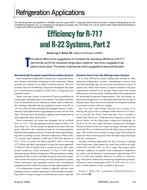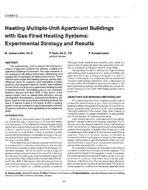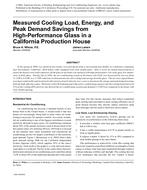Click here to purchase
A new accelerated corrosion test was designed and implemented to assess corrosion resistance of all-aluminum microchannel heat exchangers. The chemical composition and pH of corrosive electrolytes were selected based on the International Organization for Standardization’s (ISO) Standard 9223, Corrosion of Metals and Alloys—Corrosivity of Atmospheres—Classification, Determination and Estimation, for simulating various corrosive environments in an commerciallyavailable corrosion test chamber (ISO 2012). Temperature, duty cycle of wetting/drying cycles, and corrosive electrolyte concentration as variables were studied at high and low levels. Four sets of tests were conducted on ten heat exchanger samples in each test. Chilled water was circulated in five of theten samples (except in the first run) for 2500 hours, and heat exchangers were removed periodically to assess for perforation using a leak test. No leaks were detected after 2500 hours for any of the tested heat exchangers. However, pitting tendency was observed and quantified by pit density, pit depth, and pit area using optical microscopy. Plots of number of pits and tables of pit depth and pit area are presented for each set of test runs. As expected, pitting tendencies exhibited certain variance from one sample to the next depending on sample location inside the corrosion chamber. Heat exchanger samples exposed to corrosive agents that experienced wet/dry cycles with chilled-water circulations showed higher number of pits compared to their counterparts with no chilled-water circulation. The bottom rows of most heat exchanger samples showed more severe pitting and damage due to accumulation of corrosive agents.
Citation: 2020 Virtual Conference Technical Papers
Product Details
- Published:
- 2020
- Number of Pages:
- 9
- Units of Measure:
- Dual
- File Size:
- 1 file , 1.2 MB
- Product Code(s):
- D-VC-20-005


